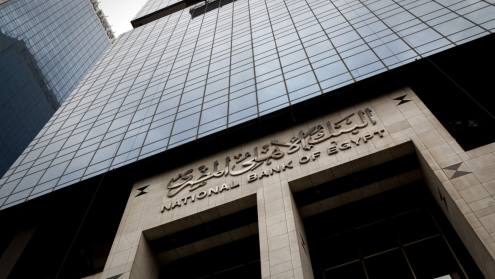Northern and southern Africa have been able to tap the international bond markets in recent years, raising money that has helped to develop and modernise their economies and creating a yield curve that makes it possible for corporates to borrow, too. But so far no such market has developed in sub-Saharan Africa. The blame is laid at various doors, including the IMF’s for preventing these countries from borrowing, and on the availability of state-controlled aid that dominates the financing of governments in Africa.
Banks that are trying to open up the market, including Renaissance Capital, Standard Bank and Ashmore Investment Management, agree with the assessment of Martin Woolf, the Financial Times economic commentator, who argues that the problem with Africa is not too much globalisation, but not enough. But they disagree with him over the solution.
Some, like Jerome Booth at Ashmore Investment Management, believe that the key is to establish a sovereign yield curve, which will provide a benchmark off which the private sector can then raise money. He also argues that it should be possible for central African governments to work together to raise multi-issuer bonds.
Others, including Neil Harvey, deputy chief executive of Renaissance Capital and chief executive for Africa, remains to be convinced of this latter argument and he believes that it should be possible for corporates to raise bonds before a sovereign yield curve has been created.
Bankers’ consensus
The one consensus that most bankers share is that Africa’s economy, boosted by high commodity prices, is on the move and that there is greater political stability than for many years. Investors, too, looking for higher yields and new places to invest their money, are taking the continent more seriously than ever before.
“The conditions are pretty good. There is now the second generation of post-colonial independence leaders. The fiscal and monetary policies have improved considerably. There are strong commodity prices and the emerging debt market has started to take off since the start of the century,” says Mr Booth.
Florian Graff von Hartig, global head of debt capital markets at Standard Bank, agrees. “We believe the economies will do well and there will be good opportunities. The continent has always been of utmost importance to the bank – we have a presence on the ground in the 17 sub-Saharan African countries,” he says.
So, can Africa become part of the international financial market? “We think global convergence will continue to take place in Africa despite the current turmoil in the markets caused by the US subprime problems. And we think it will happen much more quickly than many people think. What we have seen in the past decade is accelerating convergence and that will continue to take place despite the turmoil,” says Mr Harvey.
Stronger foundations
Although Africa remains the poorest continent in the world, the economic foundations, boosted by strong global commodity prices, are getting stronger and sub-Saharan Africa is expected to deliver a fourth consecutive year of above-average growth. It is now on target to be at least 5.3%, rising to 5.6% when South Africa is excluded.
The World Bank attributes this performance to favourable international conditions, improved economic policies in Africa itself, accelerating regional exports (particularly to China, which alongside Russia is building stronger links with the continent), and higher commodity prices, primarily in oil and metals. Inevitably the oil exporters are leading the way: last year their economies grew by 6.9%, with growth expected to be 7.5% this year and 7% in 2008, with growth increasing in line with increased capacity.
The potential in Africa’s markets is already being demonstrated in the continent’s equity markets, which are attracting foreign investors and whose growing maturity and depth is demonstrated by the success of its electronic trading platforms.
These include the Kenyan trading platform Bonanza, which is a retail trading system that uses mobile phones to transfer money from retail goods buyers to sellers, and BusyLab, a software research and development business based in Ghana that has developed a suite of tools that will target the agriculture sector across Africa with TradeNet, which allows users to sign-up for SMS alerts for whatever commodities they are interested in.
According to John Vitalo, chief executive of Absa Capital, the Zambian-based investment house, there is now an enormous amount of interest in Africa from overseas investors, although the interest was “discriminating” and investors distinguished between countries and the underlying quality of investment on offer.
Attitude lags behind
Bankers point out that this more positive approach to the continent has not been reflected in any change in attitude from governments or aid agencies, which means that it is impossible for countries to reap the full benefit of capital inflows. There is some sympathy for the attitude of the IMF which, having helped impose financial discipline in Africa, is reluctant to allow sovereign borrowing. Zambia and Ghana are considered to be two countries that could successfully tap the markets.
“The reality is that countries need to borrow to build their infrastructure. But the IMF is looking at all the governments pretty closely. And the African governments do not want to upset the IMF, even though some, like Zambia, want to invest in their infrastructure. It all depends on the countries – Zambia and Ghana are being held back unnecessarily, but for example it is right to hold back Côte d’Ivoire,” says one banker.
Given past levels of corruption in Africa, there is also concern that there is enough transparency to ensure that money reaches the projects for which it is intended. However, the real need for Africa is to raise money to develop infrastructure and bankers argue that this should make it easier to control any lending.
“On the sovereign side, the IMF should be more receptive in allowing African governments to borrow, provided the money is allocated to projects and there is a proper plan. The key is to make sure that the money gets to the right projects. The debt market can target money to projects efficiently. If the government would guarantee a minimum return – there is no reason why you cannot ring-fence a project,” says Mr Harvey.
The other key challenge is to woo countries away from the aid that they currently receive from the West. Some asset managers, such as Mr Booth, believe that “aid has caused many problems and created a state of dependency. Only in Africa do you still get five-year plans. But to get the idea of bonds accepted, you have to battle against entrenched attitudes. To get the bond markets going in the most optimal way, you have to get the support of the aid agencies.”
He believes that not only is debt good in principle – every continent in the world has benefited from the ability to raise sustainable levels of debt – but also that “debt brings real accountability”.
Equally importantly, he thinks that African countries are missing out on access to vast sums of money. “The amount these states could receive from aid budgets is small compared with the potential flows. There is already $5500bn of emerging market debt and emerging markets could constitute half of global market capitalisation in as little as 15 years. But Africa risks being left behind,” says Mr Booth.
Encouraging bond investment
The fundamental question is how to kick-start the market and create the conditions in which international investors are encouraged to invest in bonds for African corporates. Some bankers believe that the key is to establish a sovereign yield curve, and gradually develop until there is a market with global bonds sitting alongside moderate local currency issuance and conventional aid flows.
Other bankers disagree, however, pointing out that corporate bond markets were able to grow rapidly without a sovereign yield curve, and that there is no reason why Africa should not follow suit. They say that, although some countries – including Ghana, Kenya and Nigeria – could tap the market in the next year or two, the evidence suggests that a benchmark is not necessary before the private sector comes to the market.
The usual way is that the sovereign issuer starts with an issuance and creates a yield curve, which provides strong reference points for subordinated credits. But Africa seems to be different. In Nigeria alone there have been four issues for banks and seven or eight more are being discussed.
The leading example of this is the $350m bond for Nigeria’s Guaranty Trust Bank. “When we did this issue in January this year, there was no sovereign curve to price it off,” says Mr von Hartig.
It could be that Nigeria, as a sovereign borrower, follows the private sector. It has until now preferred to use its substantial reserves to pay off London and Paris Club debts, but the head of its debt management office, Mansur Muhtar, says there is interest in “exploring the possibility of a government-backed Eurobond”.
Size is an issue
One of the problems of the private sector bonds and any bond issued by the smaller African countries is that they are too small to be sufficiently liquid to attract major international investors – benchmark issuance size is reckoned to be a minimum $500m. One solution, argues Mr Booth, is for the smaller countries to work together to launch multi-issuer bonds. These could be similar to the Brady Bonds issued for Latin American countries in the 1980s with collateral attached, he says.
Other bankers are sceptical of this approach, arguing that there are massive potential problems if, for example, one of the countries involved defaults. There are also considerable political frictions between countries in Africa that make joint issuance difficult. “It is important to have liquidity, which is an issue for investors, but it is not so significant that it outweighs the risks,” says one banker.
Mr Harvey says the solution is for corporates not to wait for sovereign yield curves, but to look at other solutions. “The quality corporate can access the market without a sovereign risk benchmark with private placements. Just because governments have yet to fully develop developed yield curves does not mean that corporates cannot access capital. We have completed in excess of $1bn of these private transactions this year alone,” he says.
Local currency bonds
Bankers are also looking at the potential from investing in local currency bonds, which they believe could be an even bigger market than that for dollar bonds. International investors like the currency exposure at the moment because the expectation is for an appreciation in currencies, particularly for countries with strong oil revenues, such as Nigeria. There is also heavy demand from local investors.
None of the bankers involved in Africa is in any doubt about the problems, but there is a strong conviction among them that the potential is huge and that investors from Europe, the US (operating through offshore hedge funds), the Middle East and Asia are keen to place their money on the continent providing there are attractive opportunities.
At Standard Bank, Mr von Hartig says: “We are very optimistic that we will see a number of issuers coming to the market.” While at Renaissance Capital, Mr Harvey says: “The potential is huge.”
The key question is whether these markets can open up without a change in philosophy from the IMF and aid donors.











